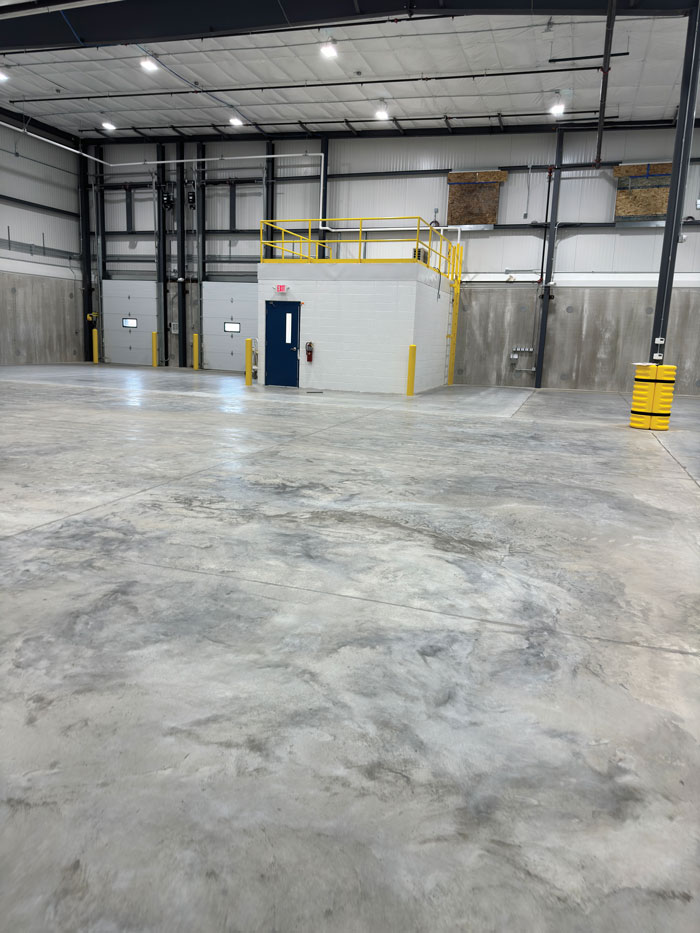Allowed industrial ladder use varies by function
 The size and use of this elevated space in a new industrial facility meant a ladder rather than stairs for access was permitted by code. (CANCO)
The size and use of this elevated space in a new industrial facility meant a ladder rather than stairs for access was permitted by code. (CANCO)
1 year ago
International Building Code only allows ladders to be used in locations that are unoccupied and do not require a means of egress.
Where can a ladder be used in an industrial facility?
I was recently asked this question during a meeting with a client and thought it would be a good topic to address as I’ve been asked this frequently over the years. Both the International Building Code (IBC) and Occupational Health and Safety Administration (OSHA) regulations dictate where ladders can be used. Therefore, both would need to be reviewed and the most stringent requirement of the two would need to be met.
The International Building Code only allows ladders to be used at specific locations that are considered unoccupied and therefore do not require a means of egress. The IBC even goes as far to say “Permanent ladders shall not serve as a part of the means of egress from occupied spaces within a building” (2021 IBC, Section 1011.16)
The following are examples of locations in an industrial facility that are permitted to use a ladder for access:
- Equipment platforms – “An unoccupied, elevated platform used exclusively for mechanical systems or industrial process equipment, including the associated elevated walkways, stairways, alternating tread devices and ladders necessary to access the platform.”
- Non-occupiable spaces which are accessible only by narrow passages, catwalks, crawl spaces, or freight elevators.
- Non-occupied roofs where the IBC does not require stairway access. (Roof and penthouses containing elevator equipment that must be accessible for maintenance need stairway access).
- Where the International Mechanical Code (IMC), section 306.5, permits ladders to access equipment and appliances.
The IMC allows a ladder to be used where equipment or appliances are located on a roof or elevated structure and the elevation is over 16 feet above grade level. (In instances where the roof is less than 16 feet above grade level, a portable ladder may be used). Section 306.5 of the IMC also designates requirements for the construction of the ladder.
OSHA 1910.23 also prescribes where ladders can be used and specifies requirements for their construction. OSHA is more stringent in regards to accessing equipment platforms. OSHA requires stairs to provide access from one walking surface to another when operations require regular and routine travel between levels, including equipment platforms. The term regular and routine would encompass access to varying levels daily or during each shift so workers can conduct regular work operations. It also includes access necessary to perform routine activities or tasks performed on a scheduled basis, even those not performed daily, especially if the workers will be exposed to hazardous materials or need to carry heavy or bulky items. Where OSHA requires stairway access and the IBC does not, then only OSHA’s requirements for stair construction would apply and need to be followed.
It is also worth mentioning an alternating tread device, which is a hybrid between a stair and a ladder. See image below. The IBC allows these as a means of egress from mezzanines not more than 250 square feet and serving five or less occupants in group F (Factory), H (Hazardous), and S (Storage) occupancies. Alternating tread devices may also be used to access unoccupied roofs.
Note: The aforementioned requirements are taken from the 2021 International Building Code.
As always, if you need assistance or have questions regarding code compliance in your facility, please contact me.

About the Author
Ellen McCulley graduated magna cum laude with a Bachelor of Architecture degree from Iowa State University, where she received the Pella Architectural Award from the Department of Architecture in the College of Design. She is a registered architect in Iowa, Illinois, Nebraska and Missouri, and joined Nelson Design, Inc., a wholly owned subsidiary of Carl A. Nelson & Company, in 2012.
How to obtain code review for your project or facility
Carl A. Nelson & Company is available to help clients address code-related issues in their facilities. Call (319) 754-8415 and ask for Ellen McCulley. Review past installments of Decoding the Code at www.carlanelsoncoconstruction.com/decoding-the-code/